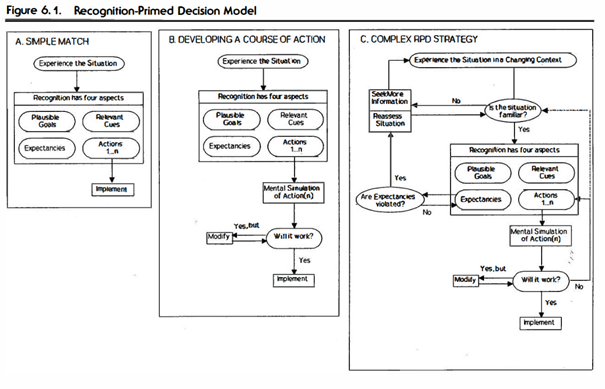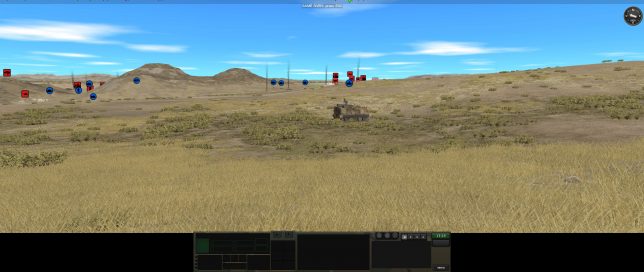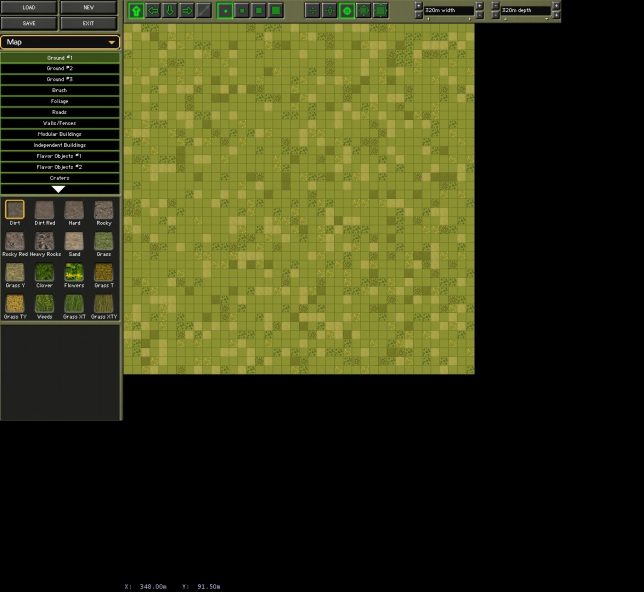(Disclaimer: Battlefront was kind enough to provide me with a copy of Combat Mission Cold War for this review)
Decision-making in a tactical environment is key to the success of military forces. Usually, life or death decisions must be made in split seconds with minimal information. The lack of information, often called the fog of war, is the differentiator between military (and crisis) decision-making and decision-making in the civilian world. This skill has to be regularly trained to maintain and improve on it. However, one recurring theme of military life is the lack of such training: oftentimes military forces are burdened with a myriad of administrative and logistical tasks and tactical training falls short.
One way to mitigate this issue is via tactical decision games (TDGs). TDGs are small tactical problems that can be set up and worked on with very little effort. The aim is to force participants to quickly think through the problem and find a solution with imperfect information, then to discuss the proposed solution in an environment that fosters debate. One of the very first popularizers of TDGs were Maj (USMC ret.) John Schmitt, who in his paper How We Decide laid down the fundamental arguments for using TDGs and with Mastering Tactics provided a primer on tactics and TDGs, as well as Bruce Gudmundsson and his Decision Game Club.
On the theory of decision-making, Maj Schmitt contrasts two different models: Rational Choice Theory (RCT) and Recognition Primed Decision Model (RPD). RCT is an analytical decision-making model, according to which people make decisions by gathering and analyzing necessary information, weighing it according to some previously established criteria, and then evaluating possible solutions. Decision-making can be improved by learning and improving the process. In a highly dynamic environment, this is hardly possible: information is incomplete, there is often no time to evaluate many different options and the high complexity and dynamics of the situation prevent the establishment or use of any pre-set criteria.

In contrast, RPD is essentially based on someone’s prior experiences. According to this theory, someone makes a decision by comparing the current situation with past experiences and their knowledge to come up with workable solutions. Options are not compared against each other and usually, the first solution that will work is chosen. Researcher Gary A. Klein goes into more detail in his essay titled “A Recognition-Primed Decision (RPD) Model of Rapid Decision Making” in Decision Making in Action. Models and Methods. In Training People to Make Better Decisions, Major Schmitt identifies three essential requirements to improve decision-making training:
- Decision skill training “should be experiential and grounded within the domain in question”.
- Repetition, to build a base of experience.
- Feedback, which accelerates the learning process.
These three elements are present during a life TDG session. But what if someone just does not have access to such a session? Or what if the feedback that an instructor can give is limited because the instructor’s actual tactical experience is limited? What if the reliance on such an instructor, or the instructor’s own education and training, leads to groupthink? Or what if the lack of a dedicated red team, a living and thinking opponent with its own goals and objectives, limits the usability of these TDG sessions?
Enter Combat Mission Cold War
The Combat Mission series is a series of video games that focus on the tactical level of war (I have written about them here). It includes installations set in World War 2, like Final Blitzkrieg and Fortress Italy, Shock Force 2 which focuses on modern asymmetrical war set in Syria, as well as Black Sea which pits NATO against Russia in modern-day Ukraine. Combat Mission Cold War (also on Steam) is the newest game in the series. It is set between 1979-1982 in Europe and pits NATO forces against the Soviet Union. Cold War uses Battlefront’s Game Engine 4 and comes with three scenarios. These are:
- the National Training Center (NTC) campaign, which pits a standard US formation against a dedicated OPFOR,
- the US West German campaign, which has the 2nd Battalion Task Force of the 28th Infantry Regiment fight it out between Fulda and Hanau (playable in 1979 and 1982),
the Soviet campaign, which sends the 120th Motor Rifle Regiment to the North and East of Fulda.

Combat Mission Cold War is categorized as a game, but it is much more than that: it is an excellent tactical simulation and sandbox for experimentation! Weapons effects are modeled realistically, vehicles and crews behave as you would expect them to do in real life. Terrain, visibility all play a role in this simulation. However, the Combat Mission series has a very essential aspect that is often missing in exercises and TDGs: a thinking and acting enemy force that pursues its own objectives and is ready to cross swords with you! The games scenario editor makes it possible to create new campaigns and scenarios and provides the player with unlimited possibilities for training. The combination of these features makes Combat Mission Cold War a powerful tool for tactical training!

Combat Mission Cold War can be used standalone by anybody interested in modern (Cold War-era) tactics, or it can be used as part of a dedicated training program managed by a military professional. The AI is very well programmed and can be set to a very high difficulty that will even challenge expert tacticians. If this is not enough, it can be played against a life human opponent in multiplayer or as play-by-email.
Conclusion
Combat Mission Cold War is another superb addition to the Combat Mission family of games, taking the setting into the Cold War. Combat Mission games are unique in that they provide a realistic simulation of modern combat, offer a sandbox for experimentation, and have a worthy opponent in the challenging AI. The only drawback is that they can be micro-management heavy, as each vehicle and each infantry squad has to be managed, even the most simple tasks have to be ordered by the player. It would be great if Battlefront could add a way to set doctrine/SOPs in future Combat Mission games to reduce the micro-management and permit more focus on the overall tactical situation.
All in all Combat Mission Cold War is a great game that can be used in training and education, as well as in hypothetical Cold War gone hot scenarios. It is an indispensable tool in tactical training and education.
